When I travel to new places, I am always curious about how people live and have lived. I enjoy exploring the architecture of local homes, both from the outside and inside. Visiting cities like London, Rabat in Malta, and Novelda in Spain has left me with lasting impressions of their unique architecture and way of life. Amsterdam, in particular, boasts stunning houses that can be admired from the exterior, and some can even be explored inside. Look at my list of impressive Amsterdam houses to consider including in your travel plans. To begin, here is a brief overview of the history of the city's canal houses.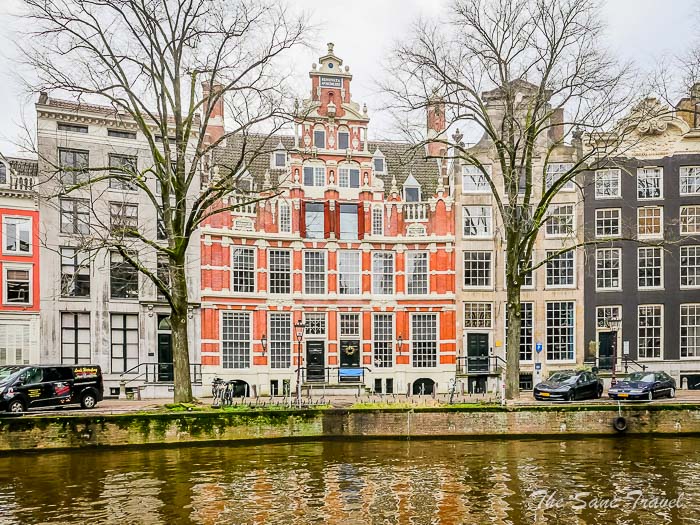
Canal houses
Amsterdam is famous for its extensive network of canals and iconic canal houses, which have historically served as residences, workplaces, and storage facilities. Each house is unique, with its distinct gables. While many assume the canals have always been part of Amsterdam, they were built around 300 years ago, followed shortly after by the construction of the canal houses. A fascinating aspect of Amsterdam's history is that the narrowness of its canal houses resulted from historical taxes based on the width of the house.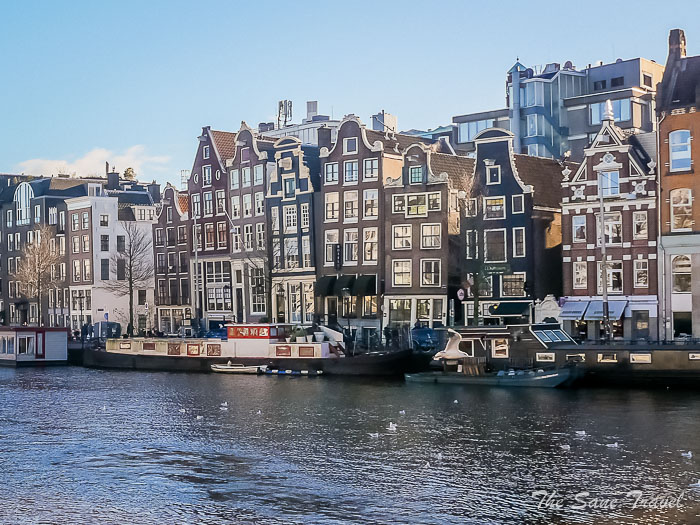
First, let's look at the houses you can admire just from the outside.
Dancing Houses on Amstel
The Amstel River Waterfront in Amsterdam is a well-known symbol of the city's history and unique architecture. The row of picturesque old houses along the canal offers visitors a glimpse into the 17th century. One intriguing local legend about the Dancing Houses on Amstel is that they are said to sway slightly due to being built on wooden pilings. Over time, these tall and narrow structures have gradually sunk into the soft ground. Despite concerns about the swampy terrain, recent renovations have reinforced the foundations of these historic buildings.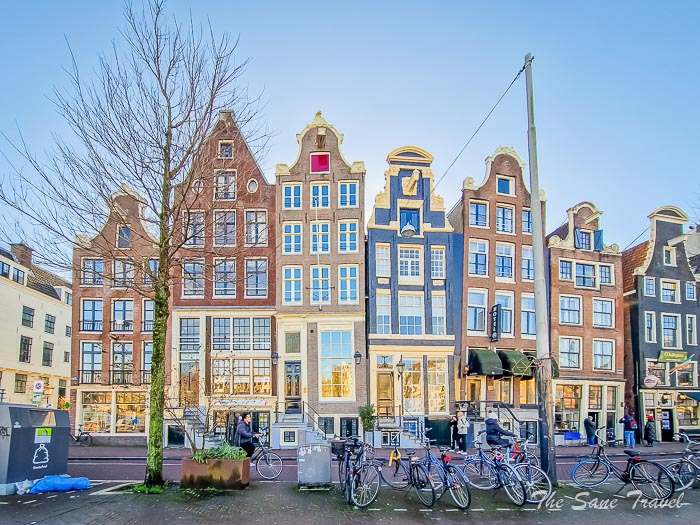
Useful tip: The Damrak narrow houses, situated by the Damrak canal close to Amsterdam Central Station, are also known as dancing houses. Visitors are invited to explore both locations.
Address: Amstel 102II, 1017 AD Amsterdam
Houses of Seven Nations
The area known as the Houses of the Seven Nations, or Zevenlandenhuizen, is a hidden gem worth visiting. Located near Vondelpark, this neighbourhood invites visitors to take a stroll and admire its unique architecture. Along Roemer Visscher Street, seven houses – built in 1894 by architect Tjeerd Kuipers at the request of Amsterdam philanthropist Sam van Eeghen – represent different European countries. Each house showcases a distinct architectural style, reflecting the 19th-century fascination with exotic influences. 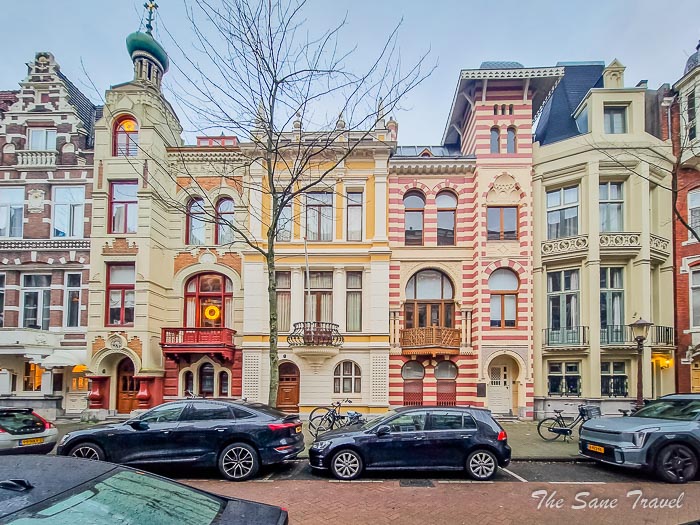 For example, House No. 20 represents Germany with its Gothic arch windows, while House No. 22 draws inspiration from French Renaissance castles. House No. 24 features the Spanish Mudéjar style, influenced by Islamic Moorish design.
For example, House No. 20 represents Germany with its Gothic arch windows, while House No. 22 draws inspiration from French Renaissance castles. House No. 24 features the Spanish Mudéjar style, influenced by Islamic Moorish design.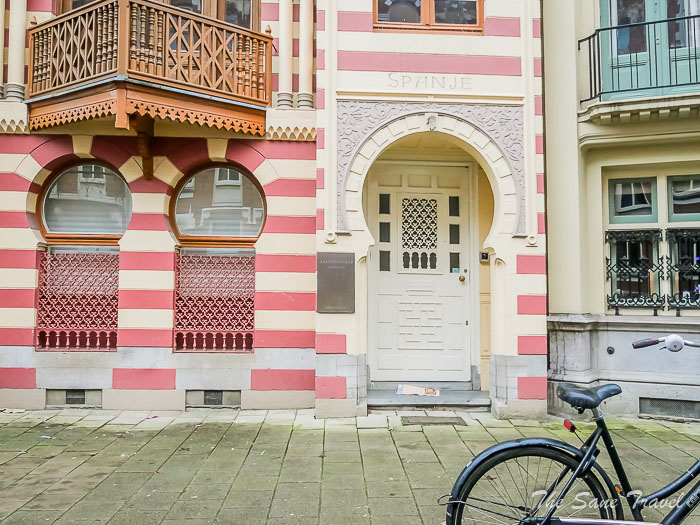 House No. 26 showcases the Italian palazzo style, while House No. 28 resembles a Russian Orthodox cathedral.
House No. 26 showcases the Italian palazzo style, while House No. 28 resembles a Russian Orthodox cathedral. 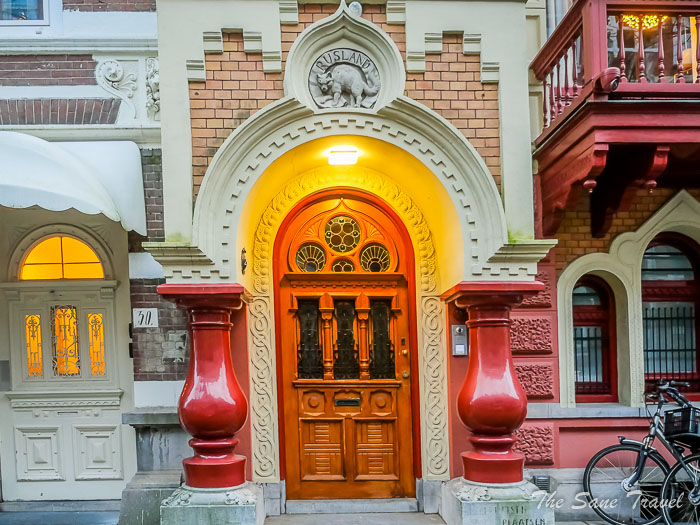 House No. 30 highlights Dutch Renaissance architecture, and House No. 30A embodies the English cottage style.
House No. 30 highlights Dutch Renaissance architecture, and House No. 30A embodies the English cottage style. 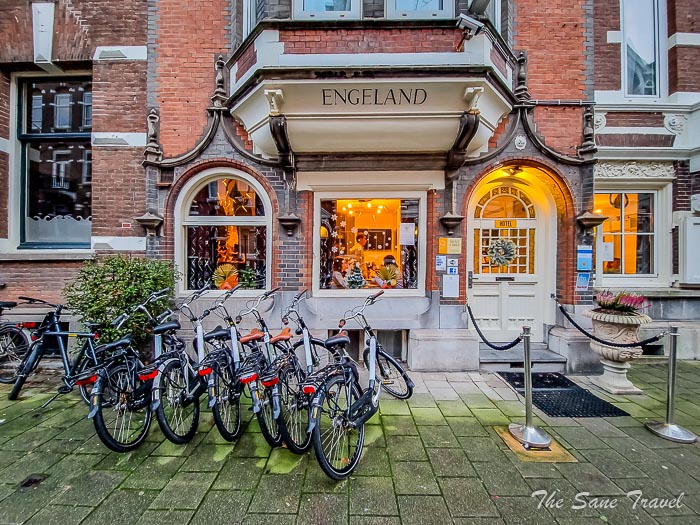 The street is named after Roemer Visscher, a prominent Dutch merchant and writer who hosted gatherings for artists and intellectuals at his home on Geldersekade.
The street is named after Roemer Visscher, a prominent Dutch merchant and writer who hosted gatherings for artists and intellectuals at his home on Geldersekade.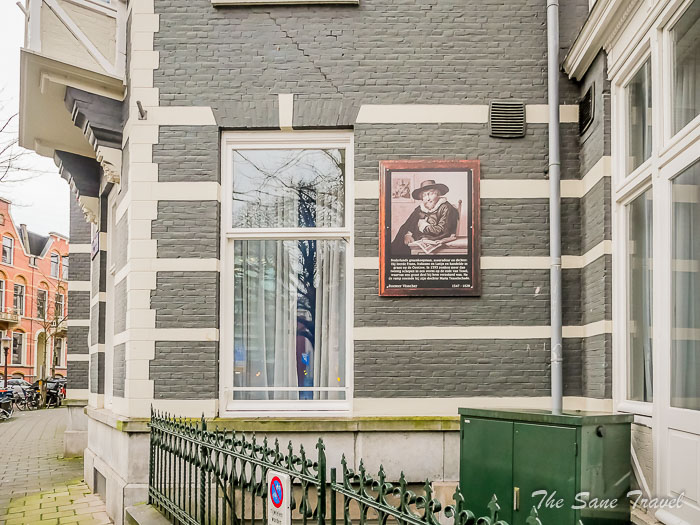
Address: Roemer Visscherstraat nr 20 – 30
Let's continue our exploration with houses you can enter.
Sluyswacht
The historic house, built in 1695 as the lock keeper's residence, sits across from the Rembrandt House Museum. Rembrandt himself painted a picture of the lock when he lived nearby. 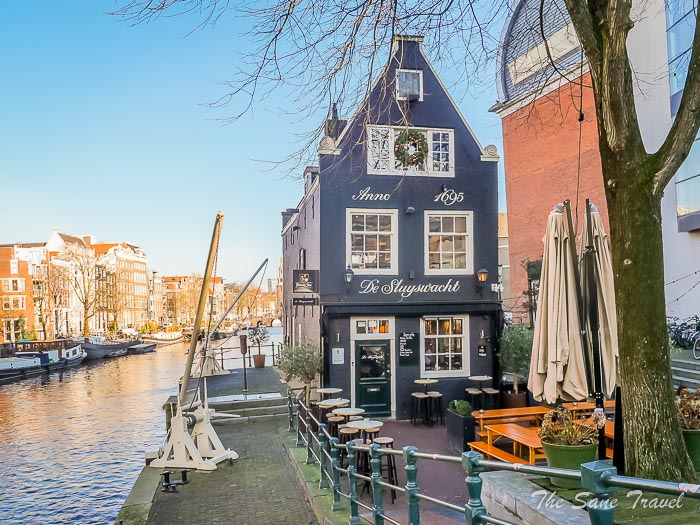 Originally serving as the lock keeper's house, it later became a hardware store before transforming into a café twenty years ago. Today, the café attracts a diverse crowd, from elderly regulars to students. Inside, visitors will find an old stone floor, wooden benches, wooden panelling, beamed ceilings, and shuttered windows, offering a glimpse into historical Amsterdam at its finest.
Originally serving as the lock keeper's house, it later became a hardware store before transforming into a café twenty years ago. Today, the café attracts a diverse crowd, from elderly regulars to students. Inside, visitors will find an old stone floor, wooden benches, wooden panelling, beamed ceilings, and shuttered windows, offering a glimpse into historical Amsterdam at its finest.
Address: Jodenbreestraat 1
Willet-Holthuysen House
The historic mansion on the Herengracht is named after Abraham Willet and Louisa Holthuysen, who resided there in the late 19th century. The couple amassed an impressive collection of art and artefacts, giving the interior a distinct and unique style. The house features numerous period rooms and lounges in the Neo-Louis XVI style, while the garden is designed in a symmetrical French style. Following Louisa Holthuysen's passing in 1895, the Willet-Holthuysen House was gifted to Amsterdam and transformed into a house museum. 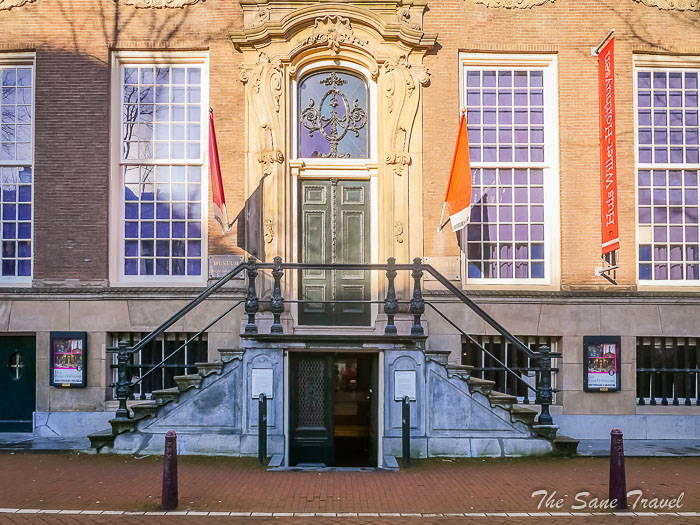 Visitors can explore the ballroom, dining room, drawing room, and garden room to gain insight into the lavish lifestyle of the Willet couple.
Visitors can explore the ballroom, dining room, drawing room, and garden room to gain insight into the lavish lifestyle of the Willet couple. 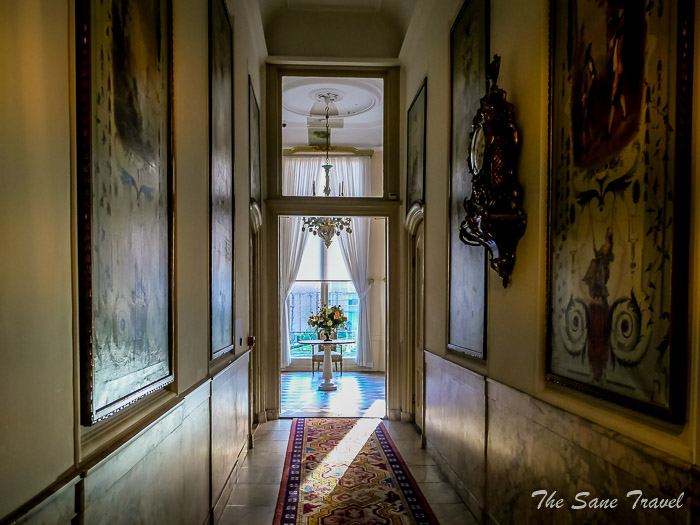
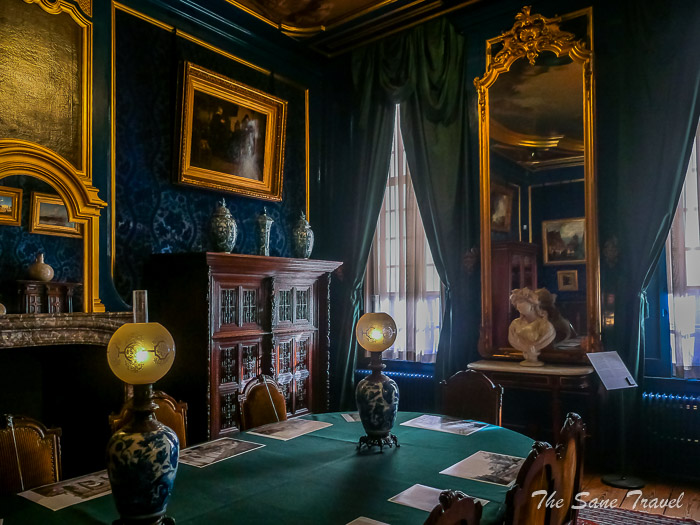
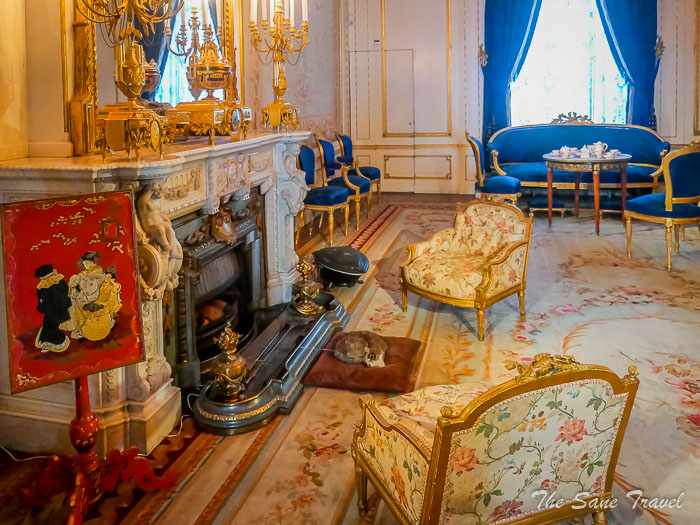
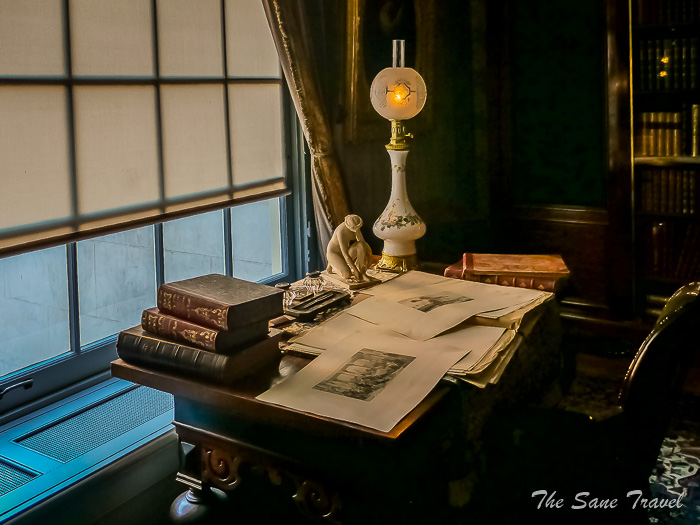 Additionally, the basement houses the kitchen and utility room, providing a glimpse into the daily lives of the staff. The mansion also boasts a stunning city garden, designed in the 18th-century French style, with historic trees and plant species.
Additionally, the basement houses the kitchen and utility room, providing a glimpse into the daily lives of the staff. The mansion also boasts a stunning city garden, designed in the 18th-century French style, with historic trees and plant species.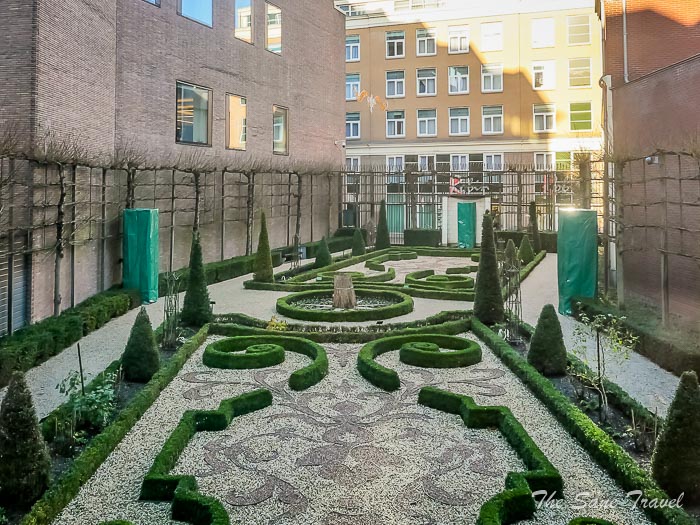
Address: Herengracht 605. Open daily from 10.00 to 17.00.
Museum Van Loon
Located in Amsterdam's iconic canal belt, Museum Van Loon is a stunning canal house designed in 1672 by architect Adriaen Dortsman. 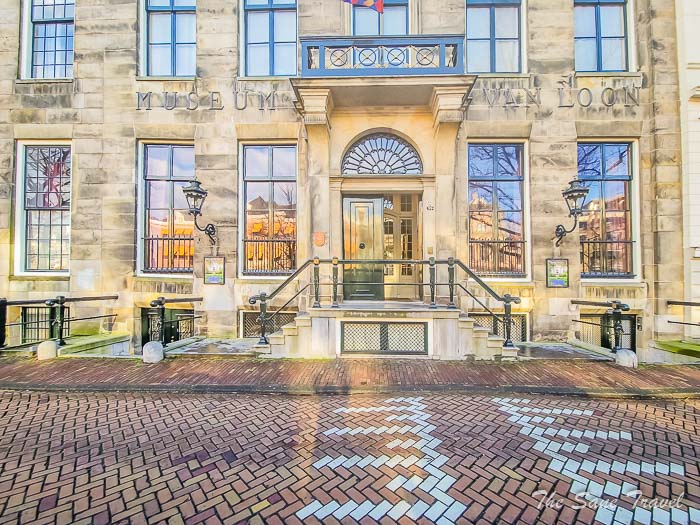 The first resident of the house was painter Ferdinand Bol, a student of Rembrandt. The museum is named after the Van Loon family, the last residents of the canal house and founders of the museum. The family had strong ties to trade and government in the city for many generations. In 1884, Hendrik van Loon gifted the canal house on the Keizersgracht to his son Willem Hendrik as a wedding present. Willem Hendrik, along with his wife, children, and staff, lived in the house. Open to the public since 1973, the museum showcases the family's rich history through a collection of portraits dating back to the early 17th century.
The first resident of the house was painter Ferdinand Bol, a student of Rembrandt. The museum is named after the Van Loon family, the last residents of the canal house and founders of the museum. The family had strong ties to trade and government in the city for many generations. In 1884, Hendrik van Loon gifted the canal house on the Keizersgracht to his son Willem Hendrik as a wedding present. Willem Hendrik, along with his wife, children, and staff, lived in the house. Open to the public since 1973, the museum showcases the family's rich history through a collection of portraits dating back to the early 17th century. 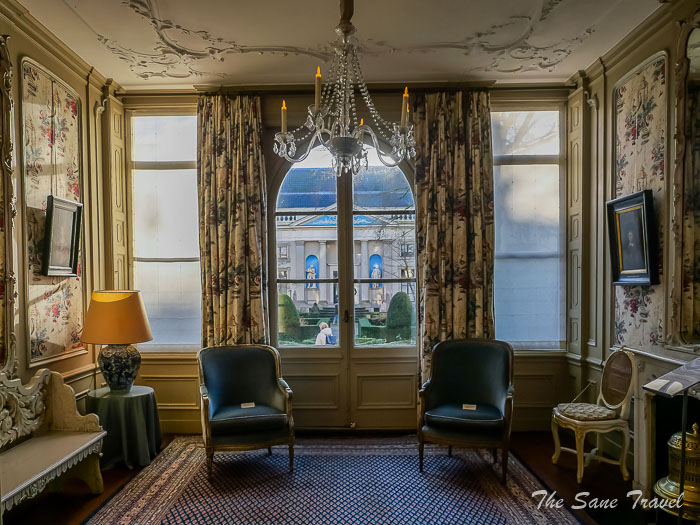
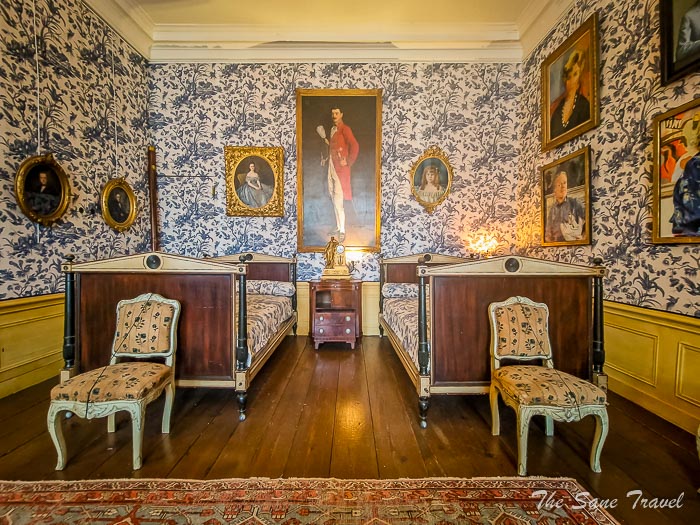 The museum offers insight into affluent life in a canal house, with period rooms filled with portraits, furniture, silverware, and porcelain from different eras.
The museum offers insight into affluent life in a canal house, with period rooms filled with portraits, furniture, silverware, and porcelain from different eras.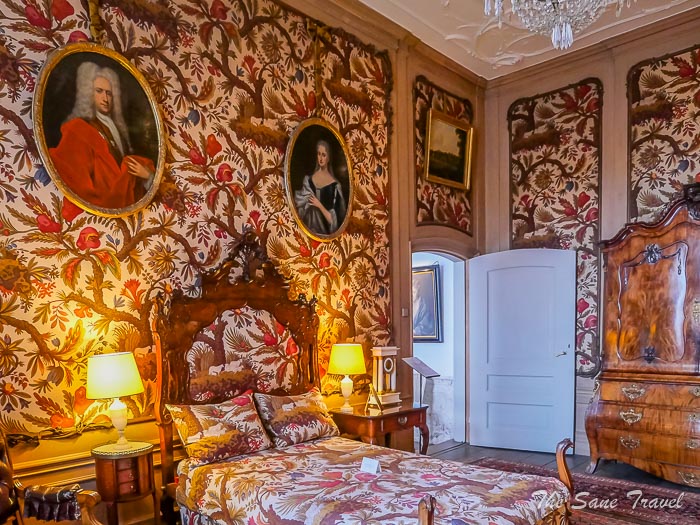
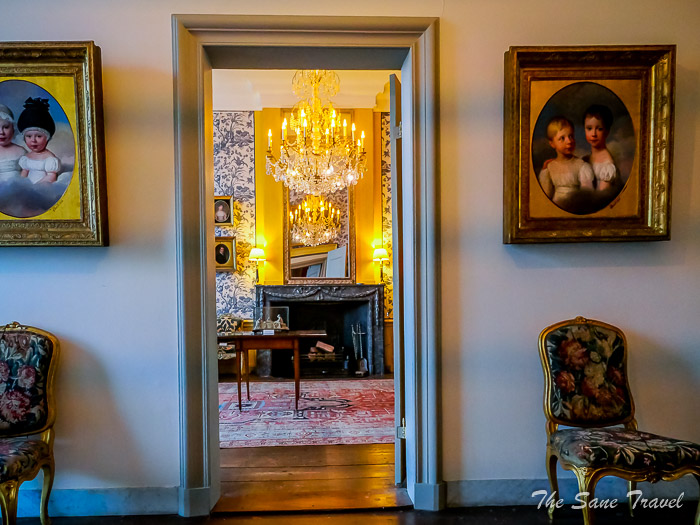 One notable piece in the paintings collection is The Marriage of Willem van Loon and Margaretha Bas by Jan Miense Molenaer, painted in 1637. The museum also features a beautiful garden designed in the 17th-century style, complete with original Van Loon carriages in the coach house.
One notable piece in the paintings collection is The Marriage of Willem van Loon and Margaretha Bas by Jan Miense Molenaer, painted in 1637. The museum also features a beautiful garden designed in the 17th-century style, complete with original Van Loon carriages in the coach house. 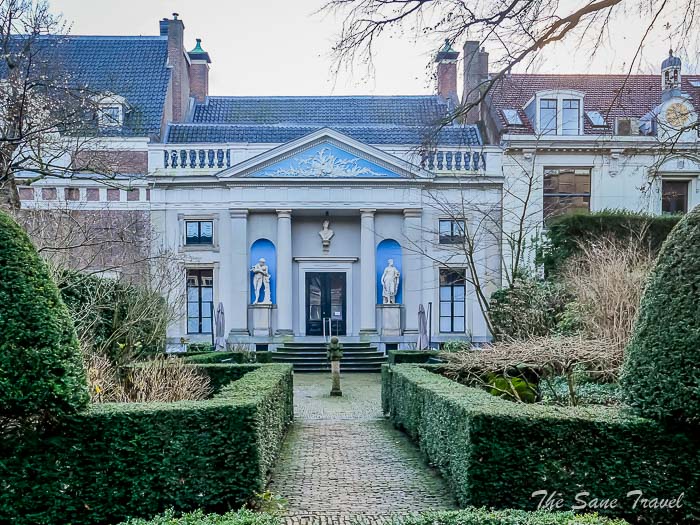 Additionally, visitors can view preserved harnesses and liveries in the coach house.
Additionally, visitors can view preserved harnesses and liveries in the coach house.
Address: Keizersgracht 672. Open daily from 10.00 to 17.00.
Museum House Bartolotti
Explore the stunning Bartolotti House in Amsterdam, a canal house built in the 1620s for banker-merchant Willem Bartolotti van den Heuvel. Designed by stonemason Hendrick de Keyser, the façade is adorned with intricate sculptural ornaments. Originally one of the largest merchant houses in Amsterdam, it now serves as a house museum. 
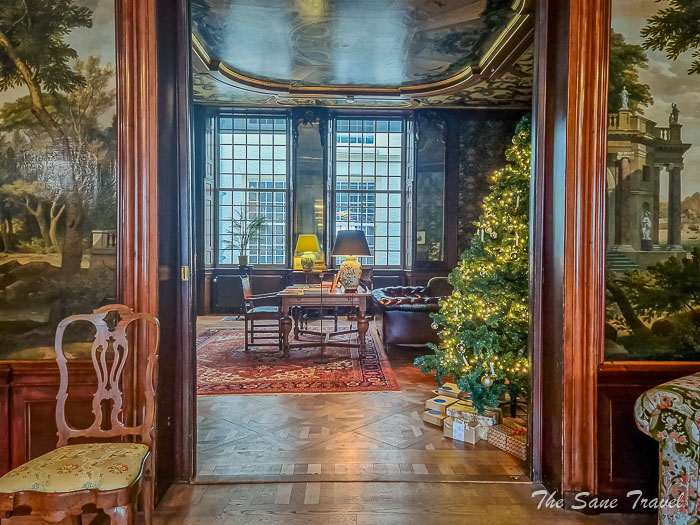
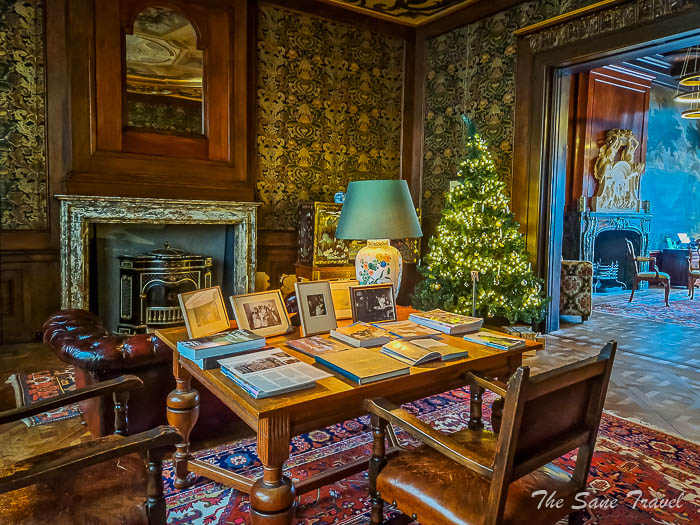 The addition of a Rococo-style back house in the 18th century further enhanced its grandeur, with the main hall as its highlight. Visitors can gain insight into the luxurious lifestyle of the residents, as well as the daily life of the staff in the kitchen and living quarters. The house features exquisite Rococo-style stucco, a grand wooden staircase, and a spacious dance hall. The extensive garden offers a serene view of the rear façade. Guests can immerse themselves in the house's history by exploring the various rooms, sitting on the elegant furniture, and enjoying a cup of tea in the historic kitchen before strolling through the garden.
The addition of a Rococo-style back house in the 18th century further enhanced its grandeur, with the main hall as its highlight. Visitors can gain insight into the luxurious lifestyle of the residents, as well as the daily life of the staff in the kitchen and living quarters. The house features exquisite Rococo-style stucco, a grand wooden staircase, and a spacious dance hall. The extensive garden offers a serene view of the rear façade. Guests can immerse themselves in the house's history by exploring the various rooms, sitting on the elegant furniture, and enjoying a cup of tea in the historic kitchen before strolling through the garden.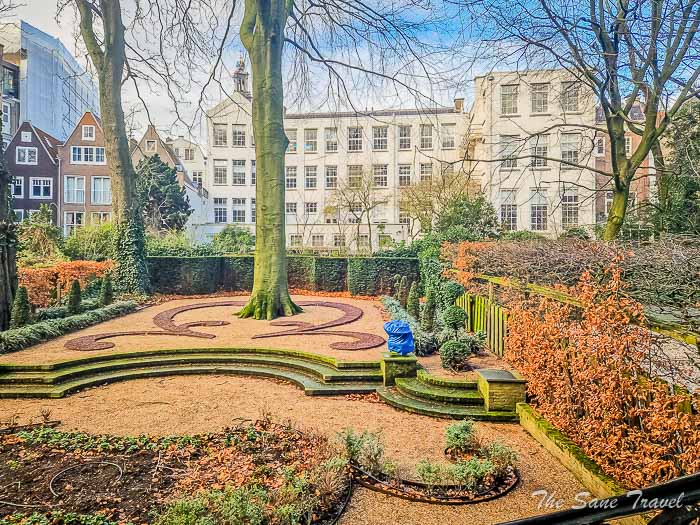
Address: Herengracht 170-172. Open Wednesday to Sunday, 10.00 – 17.00.
Like it? Pin it!
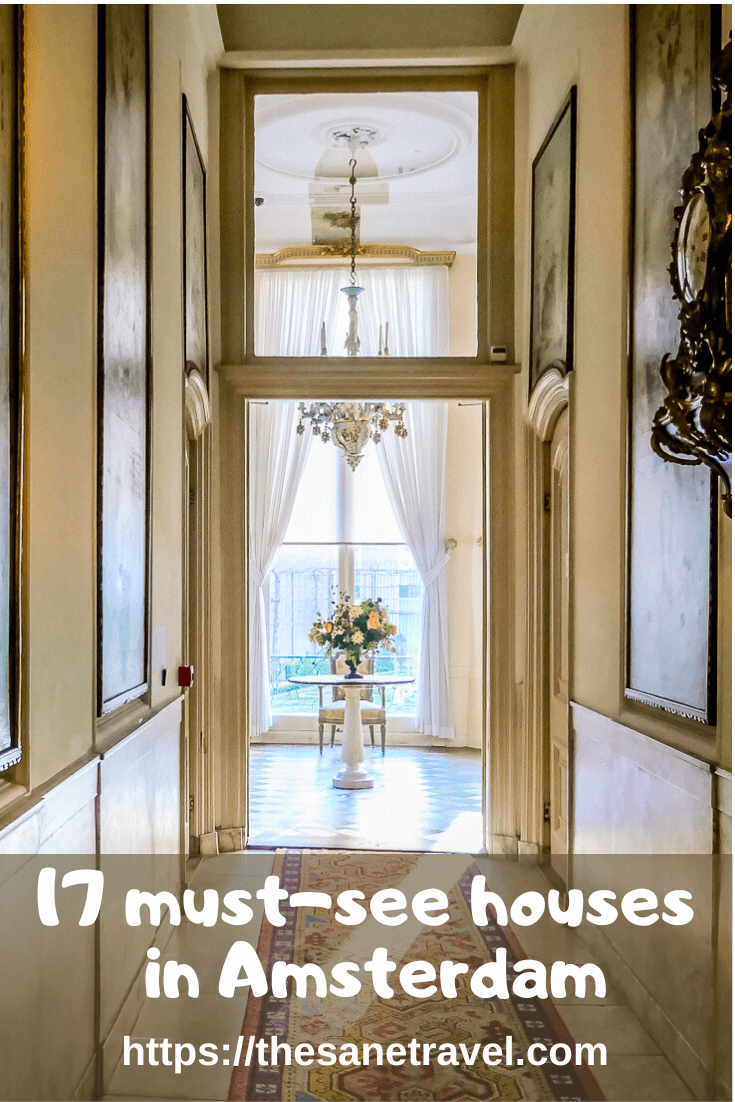
What did you think? Have you been to Amsterdam? I would love to hear from you, so please add your comment below.
Author: Anita Sane

About the author
Anita is a part-time traveller, passionate photographer and a retired career woman from Latvia, travelling mostly solo for more than 15 years. She is a skilled travel planner who plans and executes her travels by herself. Anita wants to show you how to travel the world and open your mind to new experiences. Follow her on Facebook, Instagram, Pinterest, Twitter and Bloglovin.

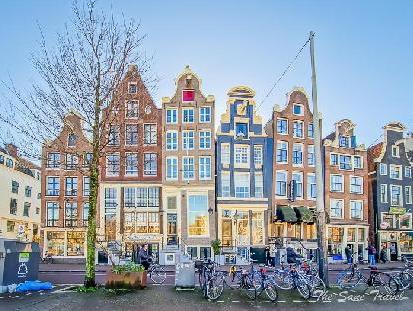
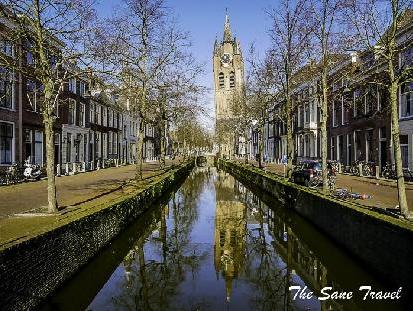
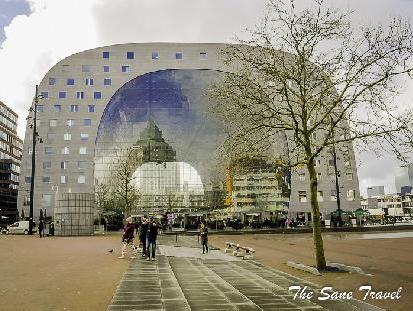
Report
My comments